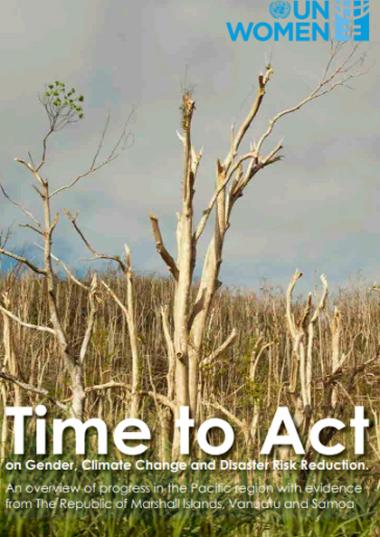

The main purpose of the policy note is to introduce risk governance as a foundation for mainstreaming risk into development policy and practice for more effective management of climate change and disaster risks. The target audience for this policy brief includes government, partners and academic institutions working towards resilient development in the Pacific region. It draws on extensive testing of mainstreaming approaches in four countries (Solomon Islands, Vanuatu, Fiji and Tonga) carried out through the Pacific Risk Resilience Programme (PRRP).
The key messages proposed by the publication are the following:
1. A 'development-first' approach to managing risk:
- Traditional ‘risk-first’ approaches manage disaster and climate change risks outside of development practice, resulting in standalone policies or projects.
- Disaster and climate change risks are largely rooted in uniformed development and as such their management needs to be mainstreamed.
- A more recent ‘development-first’ approach to risk management starts with national development objectives.
2. Transform the development agenda:
- Mainstreaming of disaster and climate change risk is an ongoing process rather than a one-of activity.
- Working ‘from within’ development and putting people at the centre will help deal with the underlying causes of disaster and climate change risk.
- An all-stakeholder approach is required with effective leadership, deliberate engagement of new actors and behavioural change across the board.
3. Risk governance building blocks:
- Risk governance provides the ‘enabling environment’ for risk-informed development and achieving resilient development outcomes.
- Strengthening risk governance is recommended around three governance components:
- People (the actors of development) - leadership, capacity and knowledge.
- Mechanisms (the underlying architecture for development) - institutional arrangements, partnerships, coordination networks, and the legal and policy framework.
- Processes (the procedures and products for development) - budgeting processes, planning processes, tools, and products (e.g. plans).
4. Country-led resilient development:
- Several countries in the region are leading the way with risk governance initiatives at national, sector and subnational levels.
- There is no ‘one-size-fits-all,’ and priority entry points for risk governance strengthening are generally determined by context and evolve over time.
- Risk governance initiatives are showing strong prospects for more resilient development outcomes, which can be replicated, sustained and are more permanent in the long term.




